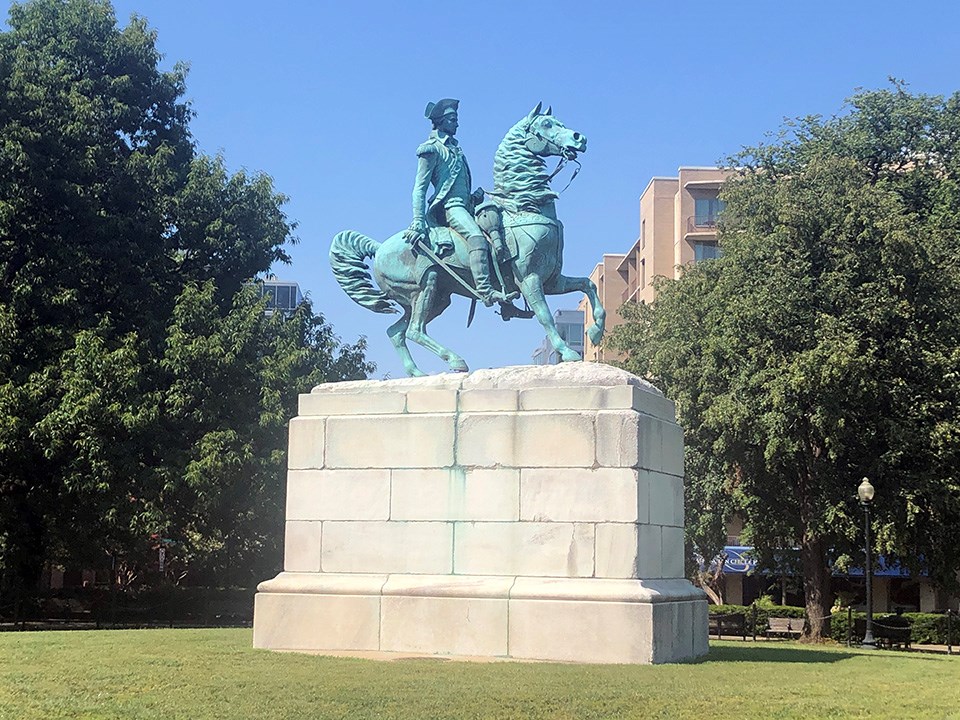
Clark Mills, who had recently completed the sculpture of Andrew Jackson which stands in Lafayette Park north of the White House, was chosen as the sculptor. He received permission from Colonel John August Washington to make a copy of George Washington’s life mask modeled by the artist Jean-Antoine Houdon for his marble statue of Washington. Mills’ two duplicates were so well executed that Washington allowed him to keep the original. Mills’ design was executed in bronze and depicts Washington at the Battle of Princeton. The statue was to have sat on an elaborate base some 30 feet tall. The base would be divided into three tiers, each telling a different chapter of the American experience to that point. The first level would depict America prior to colonization, the second the arrival of the European settlers, and the third would tell the story of the Revolutionary War. The third tier would include smaller statues of Washington’s generals. However, due to a lack of funds, Mills had to settle for a small and plain pedestal. The dedication ceremony took place on Washington's birthday, February 22, 1860. A procession a half-mile long led to the site, and included such military units as the Baltimore Grays, the Chestertown Reed Rifles, the New York Seventh Regiment, the Potomac Light Infantry, the Alexandria Sun Fire Company, the Baltimore Knights Templar. Dignitaries present for the unveiling included President James Buchanan, Vice President John C. Breckinridge, plus members of the Senate, the Speaker of the House, the Supreme Court and foreign diplomats. The keynote address was given by Representative Thomas S. Babcock of Virginia, who in a year’s time would become the Speaker of the House of Representatives for the Confederate States of America. Babcock found the location of the statue to be an "appropriate spot where the summer sunbeams latest linger, and where the breezes from the blue hills of [Washington's] own native and beloved Virginia delight to play." President Buchanan's remarks were far more forboding, however. With sectional strike at the breaking point and just two months removed from the execution of John Brown for inciting a slave revolt at Harpers Ferry, the president remarked “May Washington City, which [Washington] founded, continue throughout many generations to be the seat of government of a great, powerful and united confederacy. Should it ever become a ruin by a dissolution of the Union, it will...teach the lesson to all the dwellers upon earth that our grand political experiment has failed, and that man is incapable of self-government...." Though sorely tested during the American Civil War, the city named for General Washington endures as the nation’s capital. |
Last updated: October 12, 2021
